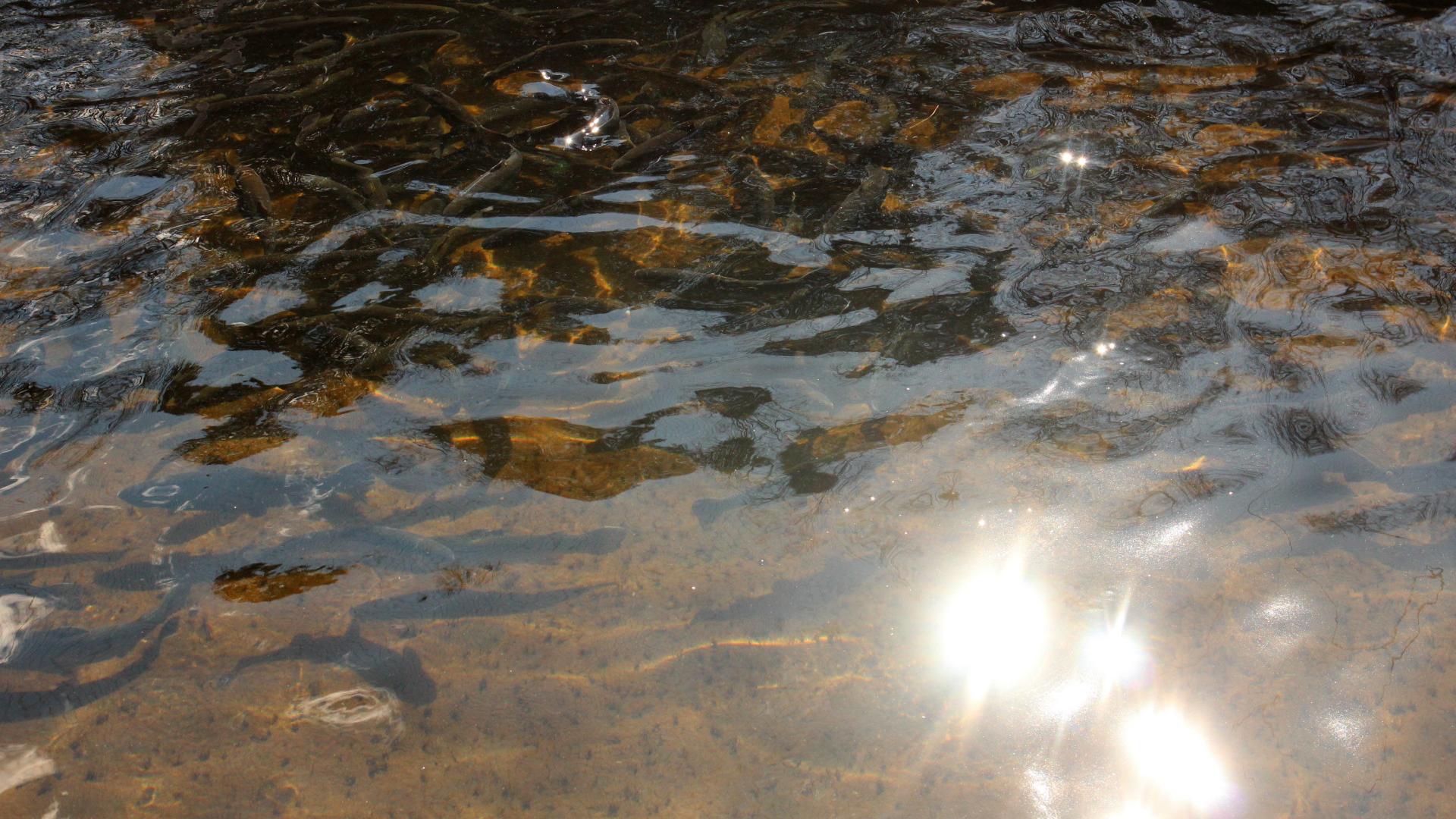Every morning, Chris Barber slips on a pair of full-length rubber boots, grabs his plastic bucket, push broom, and pool net, and heads outside to clean the ten ponds at the Essex County Fish Hatchery. The ponds aren't ponds in the traditional sense. They're made from concrete, kind of squared shaped, and housed beneath black netting that keeps predators at bay. Chris starts his day by standing thigh deep in the frigid water, scrubbing the walls of each pond and skimming leaves and other debris off of the water’s surface as hundreds of fish swirl around him.

The modest facility is literally a breeding ground for three fish species: brook, brown, and rainbow trout. Every spring, hatchery staff release about 50,000 fish into waterways throughout Essex County. The releases help maintain healthy fish populations in those streams, which also benefits people who like to fish our waters. The pond cleaning is daily maintenance — algae, fish waste, and excess feed must be removed to keep the inhabitants healthy. Some fish species aren’t as picky as others, but brown and rainbow trout won’t swim over their own waste.
“If you let it go too far they’ll start crowding up, and the lack of oxygen will make them die off,” Chris said.
A consistent and sustainable food source
Chris is the supervising fish hatcheries technician at the Essex County Fish Hatchery, which has been inconspicuously located on Fish Hatchery Road, off of Creek Road (county Route 2) in Crown Point, since 1928. Almost one hundred years sounds like a long time, but as fish hatcheries go it’s actually on the younger side. Chris said fish hatcheries in the U.S. began springing up in the 1800s as a way of creating a consistent and sustainable food source. The oldest fish hatchery in the western hemisphere was established in 1864 in Caledonia, New York.
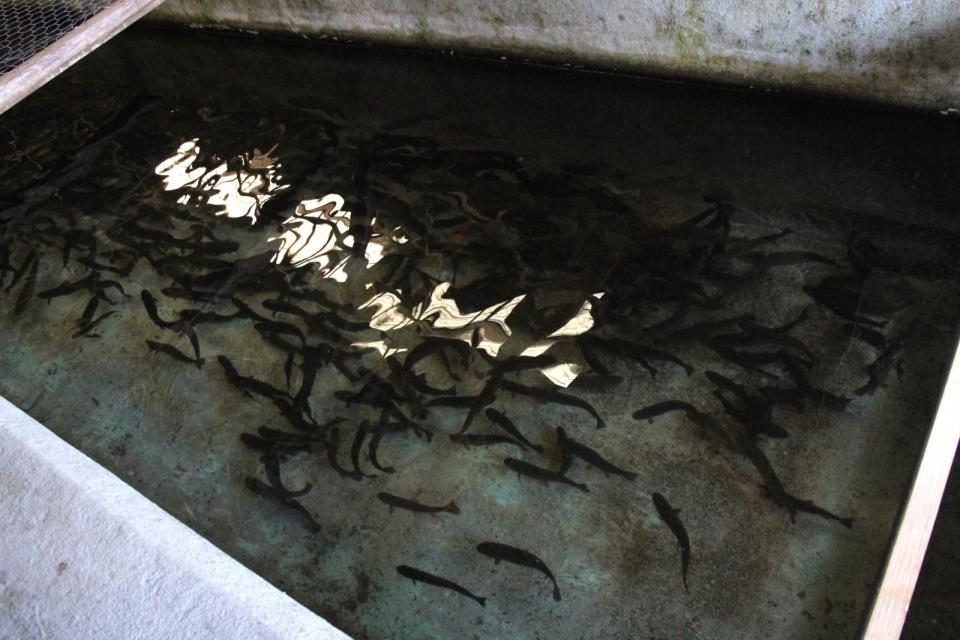
Still going strong, the Caledonia hatchery produces an impressive 170,000 pounds of fish annually. Fun fact: If you’ve ever fished for brown trout in the U.S., you can thank the Caledonia hatchery. It was used to breed and introduce the species, which is native to Germany, to the western hemisphere. Chris said that even though the Essex County Fish Hatchery isn’t as old as others, it isn’t much different because the process of breeding fish for release hasn’t changed much over the years.
From raceway to pond to stream
It all begins in the raceways, long channels that are sectioned off by species and fish size. There can be 1.5 to 3 pounds of fish per cubic foot of water, which works out to be about 25,000 fish per raceway. The easy way to separate them by size is to siphon them using a wooden box with slats in it. The smaller fish fall back into the raceway and the bigger fish stay behind.
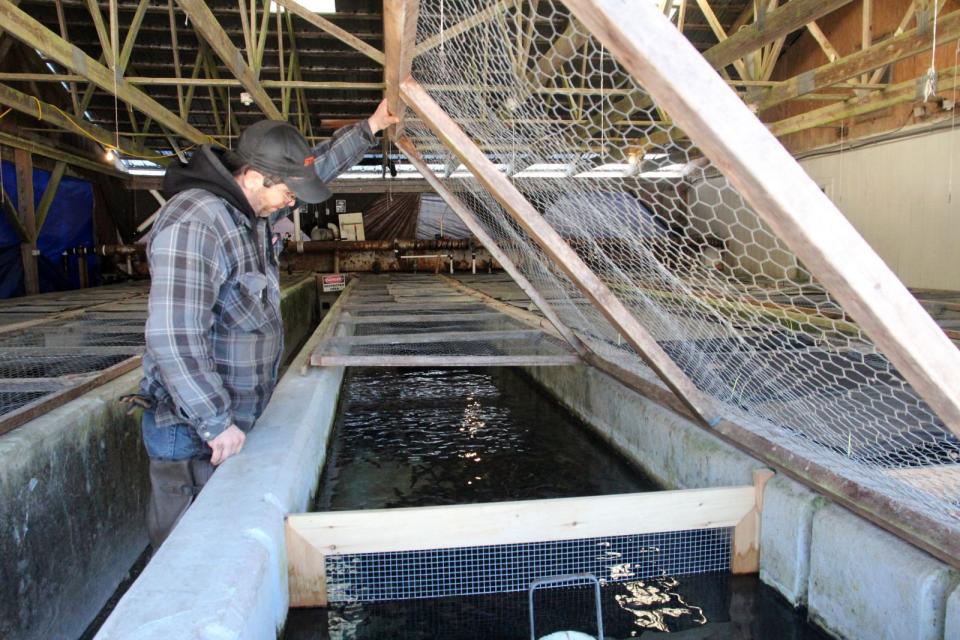
It takes a lot of water to raise fish, and it is piped in from several natural sources; a couple of springs, Ranney Brook, and Putnam Creek, which flows right past the property. There are hundreds of feet of pipes, channels, and a reservoir involved, all to get hundreds of gallons of fresh water flowing through the hatchery every minute.
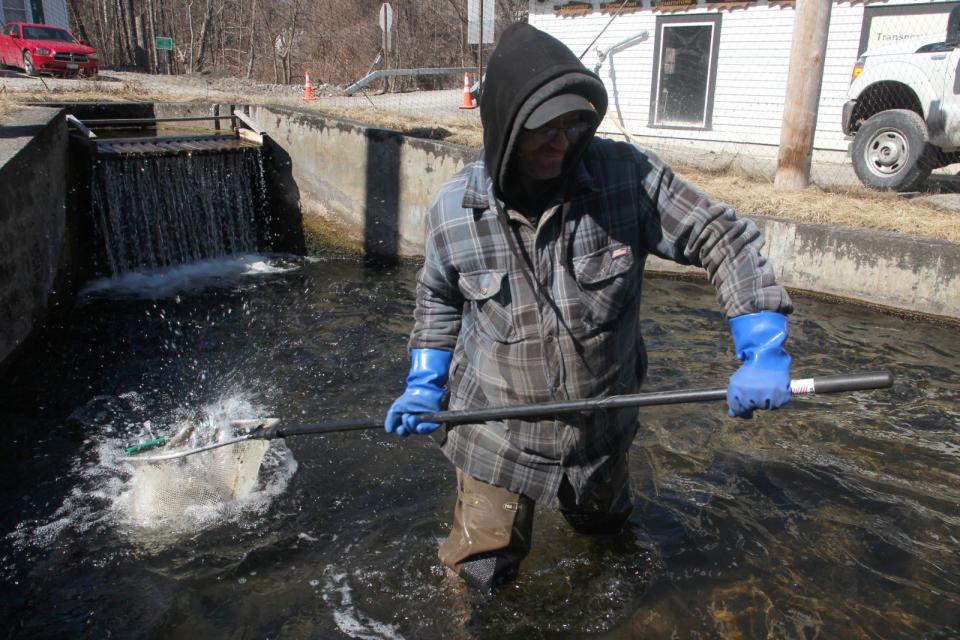
The water is first piped to the raceways. It passes through those, then it’s piped under the parking area, through the outdoor ponds, and on to Putnam Creek. In the spring, Chris nets the adult fish from the ponds, loads them onto a truck with the help of one of his fisheries technicians, and they are driven to their new, wild home. There’s a 10-30 percent chance the released fish will survive until the following spring. To improve their chances, Chris will often wait a few days to reveal where they’ve recently stocked to avoid overfishing. Rainbows, he said, will bite the same day you put them into the water, but browns and brookies can take three to five days to get used to native food and start eating.
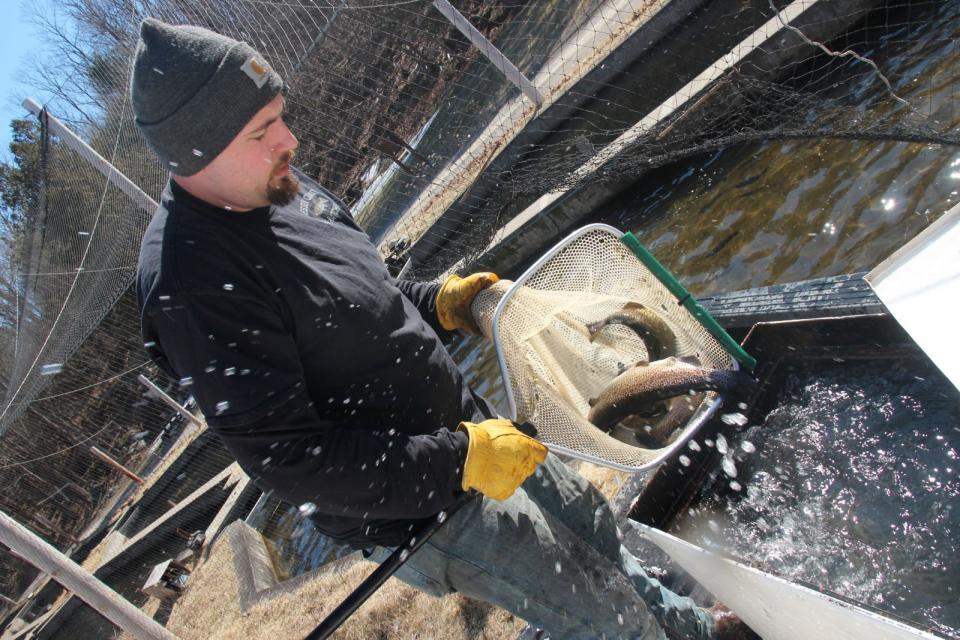
Visiting the fish hatchery
Chris said summer is the best time to visit the Essex County Fish Hatchery because the stocking is done, so staff have more time to guide visitors around and teach them how the hatchery works. That said, if you want to see the biggest fish be sure to visit in spring. Either way it's free to walk the grounds, just come prepared to be outside. People can call ahead and arrange a scheduled tour as well.
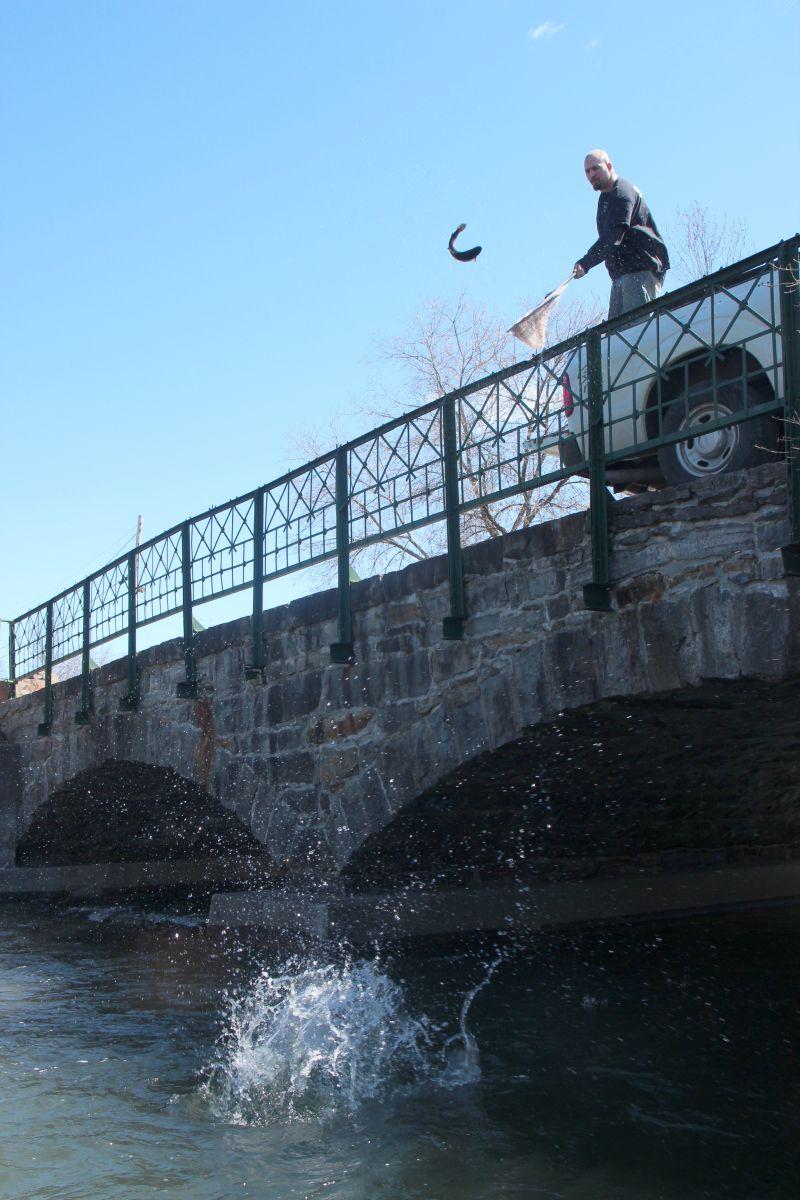
Getting there
From the intersection of Route 9N and Route 22 in Crown Point, turn onto Creek Road, follow it for 2 miles then turn left on Fish Hatchery Road. The Essex County Fish Hatchery is just a little ways down that road.
You can't drop a line at the Essex County Fish Hatchery, but rest assured — you don't have to travel far to fish in the Lake Champlain Region. Once you're done reeling in the big one, hunker down to a good meal and a nice, soft bed.
This week in ADK news:
